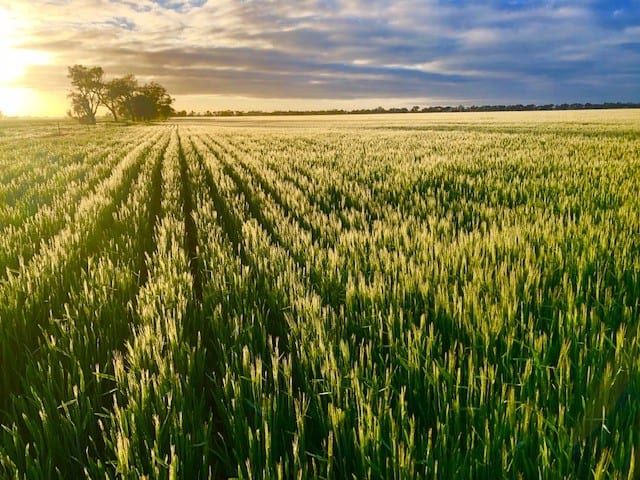What is the purpose of an industry good company?
To deliver industry good services / functions on behalf of the entire grains supply chain.
What are “industry good” functions?
Industry good functions are those services that deliver net benefit to the industry overall. The functions can benefit public and private entities, or a combination of both but do not create or add to market failure.
What will the industry good company be called?
The industry good company (IGC) has been registered as Grains Australia Limited (Grains Australia)
What are the core functions of Grains Australia?
- to establish and maintain a grain variety classification system(s)
- to provide services that maintain and improve trade and market access;
- to develop long term market and consumer analysis and product awareness to support longer term demand and value creation.
- to ensure technical support and training is available for customers of and participants in the Australian grains industry;

Why does the industry need grain variety classification?
Classification helps the market put a value on grain and assists in matching grain attributes with end-user needs. The grains industry has a wheat (managed by Wheat Quality Australia), barley (managed by Barley Australia) and oat (managed by GIWA) classification system and there could be opportunities for differentiation to add value in other crops. The intent of Grains Australia is to consolidate, manage and enhance the classification systems in Australia to add value to the Australian grains industry.
Why does the industry need a trade and market access function?
There are a range of important activities currently carried out by the grains industry that improve the market opportunities for Australian grain. These include communication about changing market conditions, working with government to improve the industry’s access to markets and having input into the wider trade policy agenda. GA’s role will be to maintain and enhance these activities on behalf of the Australian grains industry.
How will market and consumer analysis create value for the broader grains industry?
To develop long term market opportunities for Australian grain requires deep understanding of domestic and international consumer preferences, food and beverage consumption trends and the quality and functionality of more than 25 grain crops. This understanding will ultimately mean growers and the wider industry are growing and marketing a product that customers want to buy.
What consultation about an industry good company has occurred with industry to date?
The Australian Grains Industry Discussion Group, including grower representative organisations (GPA & Grain Growers) and trade representative bodies (GTA, Pulse Australia, AOF, AGEA) have been negotiating the establishment of an industry good company (IGC) since 2017. More recently Barley Australia was also included in the discussions. However, the parties were unable to reach a common agreement and as such it was decided that GRDC should take a lead role, in consultation with GPA, GGL and GTA (in the first instance), to determine an appropriate model for the IGC and in turn establish the IGC. GRDC subsequently established a steering committee to lead the establishment of the IGC with representatives from GRDC, GPA, GGL and GTA (IGC Steering Committee).
In providing GRDC a mandate to facilitate negotiations, industry has set the following criteria:
- The IGC must encompass classification, market access and communications as well as market information and education activities to underpin these functions.
- The IGC must foster whole of industry collaboration critical to driving opportunities that can provide broad benefits and support future prosperity
- GRDC remains a facilitator – any model for the establishment and running of an IGC will still require industry support prior to implementation.
When will the industry good company be established?
GRDC has already established a company limited by guarantee called Grains Australia Limited (Grains Australia). GRDC is currently the sole member of Grains Australia and the company is not yet operational. The primary intent of establishing the company at this early stage was to secure the name. GRDC is working closely with the IGC Steering Committee to finalise the Constitution and the process for the appointment of the inaugural Directors who will in turn appoint a CEO. The Board of the IGC will be a skills-based (not representative) Board. It is envisaged that Grains Australia will be up and running with a Board and CEO by the 3rd quarter of 2020.
How will Grains Australia be funded?
Under the current proposed model of GRDC as the single member, GRDC will provide 100% of the cash funding. It is anticipated that grains industry participants will contribute in-kind through participation on committees/councils/working groups.

What is the operational structure or models to service classification, market access and market information/education functions?
The Grains Australia Constitution gives the company broad powers to establish committees of the Board and advisory committees/councils. The detail around how these committees/councils will be structured and the mixture of commodity specific activities vs cross-commodity activities is currently being worked through by the IGC Steering Committee. When agreed the detail on this can be included at a later date in by-laws as required.
Doesn’t AEGIC already do some of these functions?
What will be AEGIC’s role be in the future? There was some initial consideration of establishing the industry good company via a restructure and renaming of AEGIC. This proposal is not proceeding. It is intended that AEGIC will continue (further two years funding already agreed) and consideration will be given to the transfer and/or secondment of industry good functions to Grains Australia in the future. It is intended that the longer-term model for AEGIC is for it to focus primarily on R&D and other related non-IGC service functions.
What will happen to organisations such as Barley Australia / Australian Oilseeds Federation / Pulse Australia / Wheat Quality Australia/ Other under this new model?
It is expected that the formation of GA will result in the streamlining of many of the functions currently delivered by a number of separate organisations. It will be up to the new Board and management of GA to continue discussions with all relevant organisations to determine which industry-good functions transition into the new model.
What will happen to the Board and staff of BA / AOF / PA / WQA/ Other?
It is business-as-usual for all these organisations until such time as there is agreement about what if any of their functions transition into the new model.
When will there be more detail about what exact functions will more into this new company GA (e.g. how will trade and market access functions work?)
The focus of the GA Steering Committee has been to assist GRDC to establish the company and put in place the new Board, who will then recruit the CEO and management team. Once that is done, the new Board and management will negotiate with all other relevant organisations and manage the transition of activities to GA.

What are the criteria for the selection of GA directors and what will be the skills balance of the new GA Board?
The recruitment of GA directors to the new skills-based GA Board is managed by a Director Appointment Committee with representation from the members of the Steering Committee and the administration is being managed by an independent external recruitment agency. The agency is assisting the selection committee which will make recommendations to the member. The mix of skills recruited will be appropriate to the objects of the new company. Advertisements will be appearing shortly in the media and you are encouraged to direct any queries to the recruitment company.
Why is GRDC funding a new company to carry out all these functions that were already being managed by the industry? Is this a good use of grower levies?
The new GA model takes industry-good functions that growers are already paying for and puts them under one roof. The efficiencies gained from streamlining these functions will mean a greater return on investment for grower levy dollars.